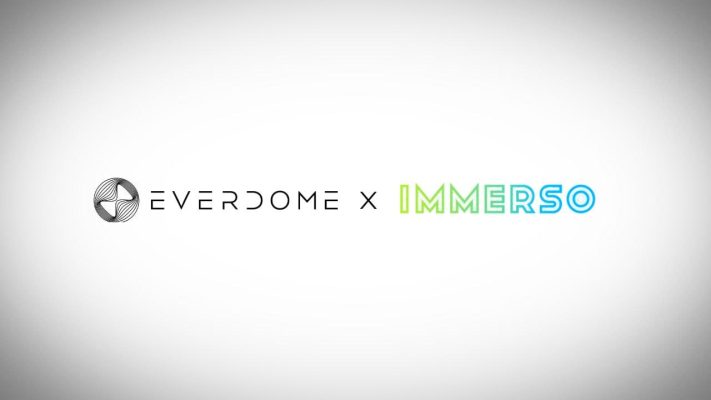In the cryptocurrency space, it’s no secret that the industry heavyweights like Cardano (ADA) and Ethereum (ETH) compete for dominance. With both ranking among the top 10 cryptocurrencies by market capitalization, these digital assets share similarities in design and application.
In this article, we delve into the subtle differences between Cardano and Ethereum, highlighting their unique features and functionalities. Read on to learn how these two crypto giants compare.
What Is Ethereum (ETH)?
Ethereum‘s Ether is not just another cryptocurrency but also the most popular altcoin in circulation today. Ethereum is a revolutionary platform that enables the creation of decentralized applications (dApps) with the power of blockchain technology. On Ethereum, developers can also build smart contracts, which, once executed, can set some rules that can and do streamline each transaction process.
Ethereum’s founder, Vitalik Buterin, envisioned a decentralized internet where the code serves as the law. At the heart of Ethereum is the Ethereum Virtual Machine, which calculates elements that determine how smart contracts function.
Developers can build dApps using Solidity and Vyper, giving them virtually any capacity without intermediaries. More experienced developers can also use YUL, an intermediate language for the Ethereum Virtual Machine, or Yul+, an extension to Yul.
Ethereum’s proof-of-work setup has presented scaling issues and raised concerns about energy consumption. That is why, as of September 15, 2022, through the event called “The Merge,” Ethereum switched from a proof-of-work consensus mechanism to proof-of-stake, allowing for faster, more cost-efficient, and environmentally friendly transactions.
This evolution aims to simplify the platform’s operation, with decreased transaction times and fees, to encourage developers to create more dApps that perform well even in high-traffic situations.
What Is Cardano (ADA)?
Cardano is a blockchain project that was designed to support smart contracts functionality.
The project was developed in 2015 by Input Output Hong Kong (IOHK), led by Ethereum co-founder Charles Hoskinson. Cardano prides itself on a modernized version of the Ethereum blockchain and has established itself as a “third-generation” platform compared to Ethereum’s “second-generation” status.
Cardano’s digital currency, ADA, is the powerhouse behind the third-generation blockchain platform, named after Augusta Ada King, the first computer programmer from the 1800s. ADA plays a crucial role in Cardano’s proof-of-stake consensus mechanism, rewarding users for validating transactions.
Charles Hoskinson, the co-founder of Ethereum, initiated the creation of the Cardano blockchain in 2015, and it went live in 2017. As a blockchain platform, Cardano functions as an alternative to Ethereum, serving similar purposes such as facilitating smart contracts and constructing an interconnected and decentralized system. Furthermore, Cardano aims to offer banking services to the unbanked globally.
While ADA prices have significantly fluctuated since its 2017 launch, Cardano’s unfinished product presents room for improvement and the potential for promising investment opportunities. However, as with other cryptocurrencies, careful investment planning is necessary due to ADA’s volatility. You should always rely on academic research and other trustworthy sources before investing in a specific token.
Cardano vs. Ethereum: Tokenomics
Cardano Tokenomics
The total supply of ADA is limited to 45 billion with an inflationary emission rate, with around 35,4 billion currently in circulation. The remaining ADA will be gradually released over time through staking.
The initial token distribution of ADA was as follows:
- 57.60% was allocated to ICO;
- 11.50% was allocated to the Team;
- 30.90% was allocated to Staking Rewards.
The initial token launch date for Cardano (ADA) was September 29, 2017.
Cardano’s tokenomics also include a treasury system, which allows users to propose and vote on projects that can be funded with a portion of the network’s transaction fees. This ensures that the Cardano network remains self-sustaining and can continue evolving and growing.
Ethereum Tokenomics
The total supply of ETH is not fixed, and same as ADA, new ETH have been created through the staking process since September 2022. However, the rate of new ETH creation is decreasing over time, and there is a cap on the total supply of ETH, which is currently around 120 million.
The initial distribution of Ethereum (ETH) was as follows:
- 83.33% was allocated to Ethereum Crowdsale;
- 16.68% was allocated to Ethereum Foundation, Early Contributors & Others.
Initially, Ethereum had an inflationary supply, with Ether increasing yearly at 4.5%. However, following the Ethereum Merge that transitioned from proof-of-work to proof-of-stake, it has become a deflationary asset because of its burn rate. The amount of Ether burned to maintain network activity exceeds the amount of Ether entering circulation.
Ethereum’s tokenomics also include a gas fee system, prioritizing transactions, and ensuring that the network can handle high demand. Users must pay a fee in ETH to execute smart contracts and interact with dApps on the network. The gas fee system helps prevent spam and ensures the network is not overloaded with unnecessary transactions.
Comparison
| Cardano | Ethereum |
| Inflationary | Deflationary |
| Fixed supply | Unlimited supply |
| Both blockchain platforms use PoS (Proof-of-Stake) | |
| Both blockchain networks use their native tokens to validate transactions and incentivize users | |
Cardano vs. Ethereum: Technology
Consensus Mechanism
Cardano uses the Ouroboros Proof of Stake (PoS) consensus mechanism, which is designed to be energy-efficient, secure, and scalable. Until recently, Ethereum used Proof-of-Work to verify transactions, but it now uses Proof-of-Stake. Today, with the current Proof-of-Stake consensus, Ethereum has lowered the network’s energy consumption by 99,99%.
Programming Languages
In the blockchain space, many Ethereum virtual machine-compatible platforms use Solidity as their programming language. In contrast, Cardano employs Haskell due to its potential for improved security and speed. However, Haskell has a steeper learning curve, making it less popular among developers.
Architecture
Ethereum’s architecture is classified as Layer 1 technology. Despite network upgrades such as the Beacon Chain and The Merge, they are merely parts of a series of advancements intended to fortify the Ethereum network and prepare it for rollups on Layer 2.
This upgrade is because Ethereum’s original design used an auction-based model where users bid for transaction space, leading to bidding wars, price spikes, and slower speeds during network congestion.
Similarly, Cardano also operates on a two-layered architecture. The Cardano Settlement Layer handles transactions, while the Cardano Computation Layer, built on top of it, facilitates smart contracts, enabling dApps to operate on the Cardano network.
Transaction Speed
Ethereum’s Layer 1 technology can handle around 30 (although often only 15) transactions per second (TPS), whereas Cardano can process roughly 1000 TPS, although it has been criticized for its developmental speed.
However, both platforms can potentially improve their TPS capabilities in the future with upcoming upgrades. For instance, Cardano’s Layer 2 Hydra upgrade can potentially increase its TPS to an impressive 2.5 million. Similarly, Ethereum’s forthcoming upgrades, which we’ll discuss later, could possibly increase its TPS by up to 100,000, a significant improvement from its current capacity.
Governance
Cardano’s governance model is designed to be decentralized, with a voting mechanism that allows stakeholders to have a say in the decision-making process. Ethereum’s governance model is transitioning to a more decentralized approach through the Ethereum Improvement Proposal (EIP) process.
Cardano’s governance structure involves 3 separate organizations:
- IOHK, which coded Cardano and developed its PoS algorithm;
- The Cardano Foundation, responsible for blockchain development;
- Emurgo, which is focused on bringing large-scale businesses onto the Cardano network.
Besides, Cardano has a treasury that operates independently of these organizations. With every block added to the chain, a portion of the ADA rewards is redirected to the treasury wallet. Whenever a network change is proposed, ADA holders can vote on it, and if the proposed changes are approved, a grant is released by the treasury.
On the other hand, Ethereum is overseen by a single organization, the Ethereum Foundation. While the foundation claims not to run Ethereum, it has made significant decisions in the past, such as during the DAO hack of 2016.
In response to the hack, the foundation allowed all ETH holders to vote on whether Ethereum should fork. The vote passed, creating a new version of Ethereum, but some miners rejected the fork and established Ethereum Classic.
Scalability
To be a strong “Layer 1” cryptocurrency, it’s essential to have a blockchain infrastructure that supports scalability. Compared to Ethereum, Cardano’s system is more scalable and can handle a greater number of transactions.
Ethereum encounters difficulties with transaction volume. The network operates efficiently during quiet periods, but during a bull market when millions of new investors enter the crypto space, Ethereum’s capacity is exceeded.
Cardano Vs. Ethereum: Crypto Price & Market Cap
Cryptocurrency investors often consider factors such as price and market metrics when seeking longevity and stability in their investments. Ethereum, being one of the oldest and most established cryptocurrencies, has a long history and larger market capitalization than Cardano.
| Metric | Cardano | Ethereum |
| Price | $0.6859 | $3,432.55 |
| Market Cap | $24,334,127,652 | $412,393,655,001 |
| Circulating Supply | 35,479,795,292 | 120,142,084 |
| Trading Volume | $1,053,115,908 | $22,112,015,717 |
While both Cardano and Ethereum have their strengths and weaknesses, Ethereum’s more extended history and larger market capitalization give it an advantage in terms of stability and mainstream recognition. However, Cardano’s innovative technology and potential for growth make it an attractive investment option for many investors.
Cardano vs. Ethereum: Main Advantages and Disadvantages
| Cardano | Ethereum | ||
| Advantages | Disadvantages | Advantages | Disadvantages |
| Strong backing from academics and a strong team guiding the project | Competing with many third-generation cryptocurrencies | The first blockchain network that can handle smart contracts | Limited capacity to deal with high transaction volume |
| Lower costs and energy usage | Unfinished product with limited uses | Supports: DApps; DEXs; Lending protocols; Yield farming; NFT marketplaces. | High transaction fees and long transaction times |
| Better potential for scaling | Less demand and lower liquidity | High liquidity due to high demand | No supply limit |
Cardano vs. Ethereum: Future Developments
Ethereum was the first-ever blockchain project to provide smart contract technology, still holding the second position according to the market cap. It is the most used platform for issuing initial coin offerings (ICOs) for new start-ups and new tokens.
Ethereum also has many DApps built in its ecosystem, which use the Ether coin. The project still has scalability issues, but many hope the problem will be resolved with future upgrades.
Like the rest of the cryptocurrency industry, Cardano has experienced a noticeable decrease in value. However, with the latest growth of the crypto market, it recovered most of its value.
The main issue with Cardano is the slow development process, with the team claiming to take their time to build the product without any flaws.
The platform still has a long way to achieve its final goal of unlimited, instant, and free transactions. Even though the team gathers experienced engineers, scientists, and developers, there is no guarantee that the project will ever be finalized, and investors may lose interest.
FAQ
Is Cardano better than ETH?
Determining which one is a better investment option is subjective and depends on your personal preferences. Ethereum has a well-established ecosystem and developer community, providing a sense of security. On the other hand, Cardano’s long-term growth potential, particularly in emerging markets, makes it an attractive option.
Does Cardano or Ethereum have a higher market cap?
As of March 1, 2024, Ethereum has a higher market capitalization than Cardano. Ethereum’s total market value is $412 billion, whereas Cardano’s is $24 billion.
How is Cardano’s platform different from Ethereum 2.0’s?
Cardano’s platform differs from Ethereum 2.0 in several ways. The most significant might be that while Ethereum remains a single-layer solution for managing smart contracts and decentralized apps, Cardano adopts a dual-layer design that combines smart contract functionality with a native currency for financial transactions.
Can Cardano replace ETH 2.0?
It’s improbable for Cardano to replace ETH 2.0, mainly because Cardano does not have a clear numerical advantage over Ethereum. It is important to note that Ethereum currently holds the title of being the most popular choice for smart contracts and DApps.
What makes Cardano and Ethereum 2.0 similar?
Cardano and Ethereum 2.0 share multiple similarities, as both use PoS, allowing users to stake their assets for transaction validation. Besides, both platforms incorporate smart contracts, enabling secure and customizable transactions on the blockchain.
Cardano vs. Ethereum: Which is a Better Buy?
Determining whether Ethereum or Cardano is the superior investment option is a topic of discussion and may hinge on personal investment preferences. While Ethereum is deemed the more secure choice by some due to its extensive developer community and ecosystem, Cardano’s potential for long-term growth is worth considering.
With its potential to attract users from emerging and frontier markets, the Cardano network could be a strategic acquisition that offers significant returns, albeit with some waiting time. Therefore, carefully evaluating both cryptocurrencies’ potential risks and rewards is crucial to making a wise investment decision.


